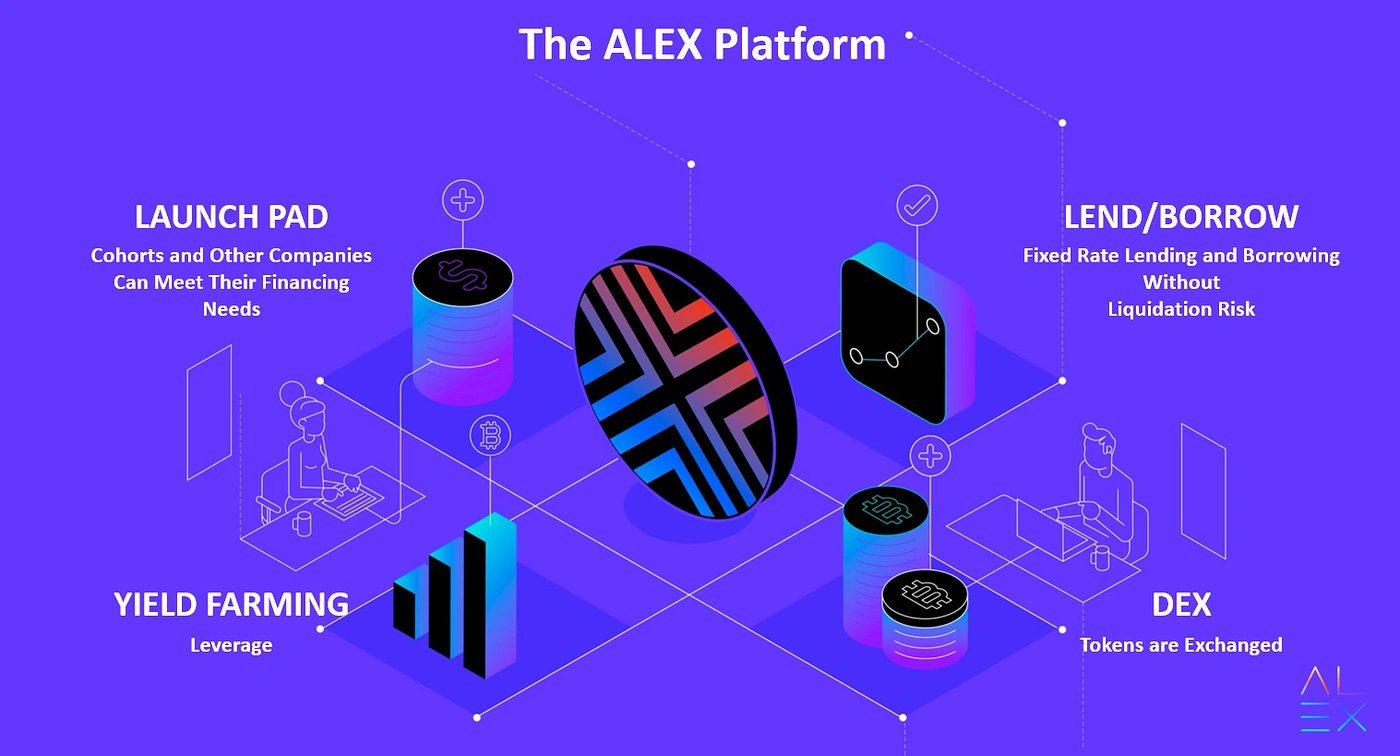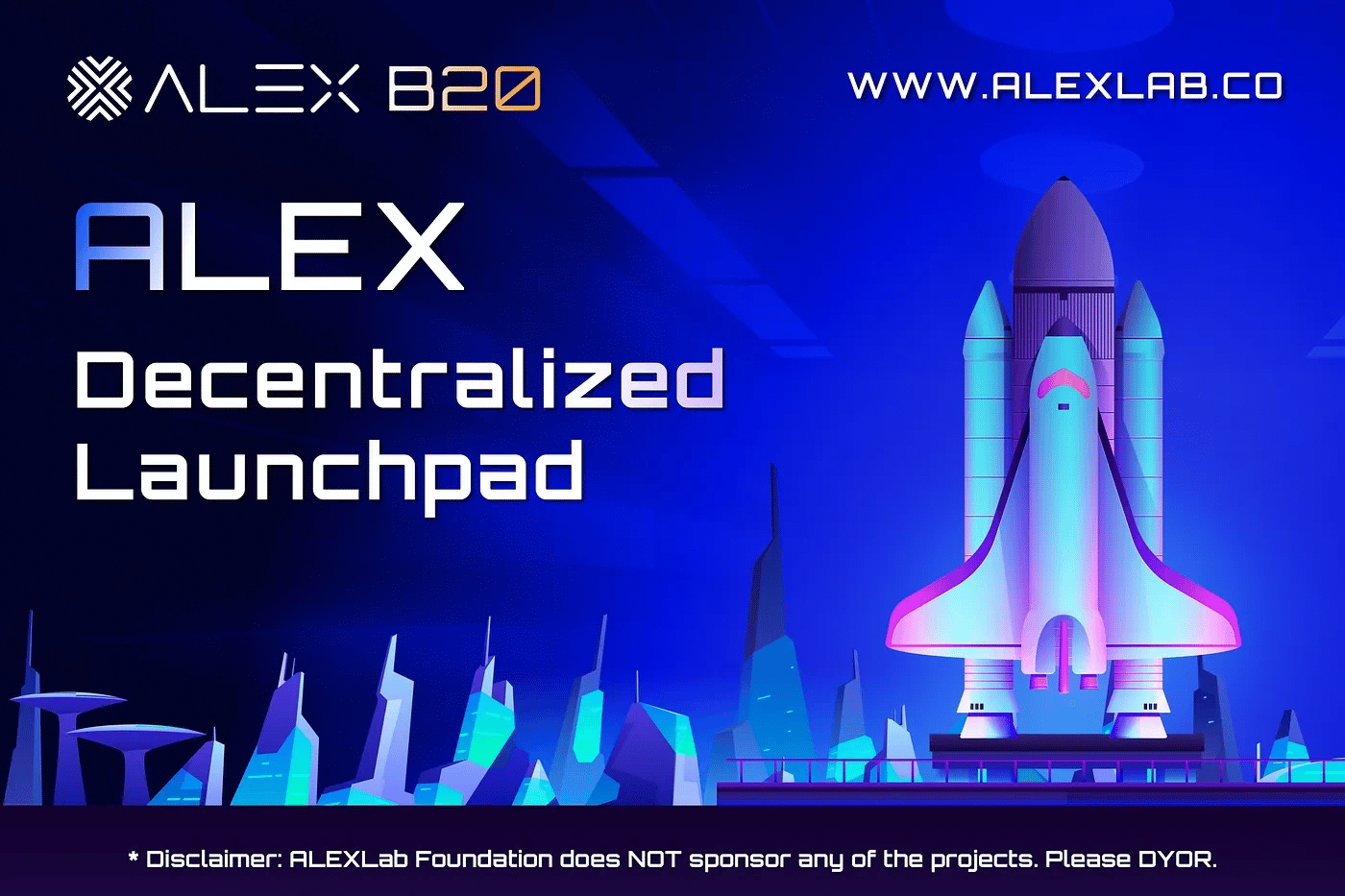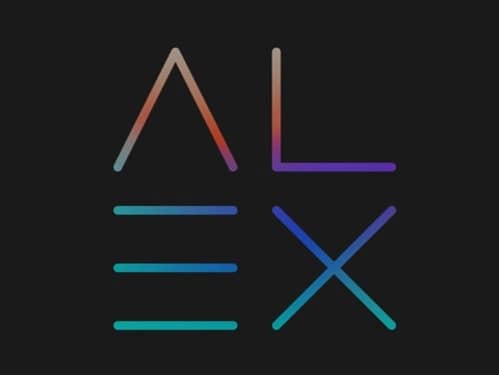위키 구독하기
Share wiki
Bookmark
ALEX
ALEX
ALEX(알렉스), 자동화된 유동성 거래소(Automated Liquidity Exchange)로도 알려져 있으며, Stacks 스마트 계약을 통해 Bitcoin을 위해 특별히 고안된 포괄적인 DeFi 플랫폼입니다. 사용자는 프로젝트 시작, 이자 획득, 토큰 교환, 금융 관행 재편 및 문화적 변화에 영향을 미치는 등의 활동에 참여할 수 있습니다. Dr. Chiente Hsu(후치엔테 후 박사), Rachel Yu(레이첼 유), 그리고 Chan Ahn(찬 안)이 ALEX의 공동 설립자입니다. [1]
개요
ALEX는 Stacks 네트워크에서 개발된 비트코인 DeFi 플랫폼으로, 전송 증명(PoX, proof of transfer) 합의 메커니즘을 통해 비트코인 블록체인의 보안성을 활용합니다. ALEX는 전통적인 금융 시장을 반영하는 오픈소스 프로토콜로 운영되며, 분산 금융 관리 도구를 사용자에게 제공하여 금융 민주화를 목표로 합니다. 이 플랫폼은 스왑, 수익 농사, 초기 DEX 상장(IDO, Initial DEX Offerings) 참여, 비트코인 레이어 1(L1) 자산(예: BRC-20 토큰) 거래 등 다양한 기능을 제공하며, 레이어 2(L2)의 프로그래밍 가능성 및 확장성의 이점을 누립니다. 또한, ALEX는 유동성 풀, 스테이킹, 신규 프로젝트를 위한 런치패드, BRC-20 오더북, 복권, 그리고 크로스체인 브리징과 같은 기능들을 지원합니다. [1][2]

ALEX Labs 재단
ALEX Labs 재단은 비영리 단체로 운영되며 ALEX 프로토콜의 오픈소스 기술을 관리하는 중심 역할을 합니다. 중립적인 공간으로서, 재단은 이해관계자 간의 협업을 통해 미래 방향에 대한 합의를 도출합니다. 재단은 완전한 기능을 갖춘 DAO로 발전하여 ALEX 커뮤니티가 온체인 및 오프체인 거버넌스 문제를 감독할 수 있도록 하는 것을 목표로 합니다. [3]
브리지 해킹
5월 16일, 알렉스 랩(Alex Lab)은 공격자들이 BNB 스마트 체인(Binance Smart Chain)(BNB 스마트 체인) 브리지를 악용하여 약 430만 달러를 훔쳤다고 보고했습니다. 이 공격은 공격자가 개인 키를 장악한 것을 통해 발생했지만, 알렉스 랩의 스마트 계약(smart contract)(스마트 계약) 코드와 기반 인프라는 손상되지 않았습니다. 알렉스 랩은 공격자들에게 자금의 90%를 반환하는 대가로 10%의 현상금을 제공하고 자금이 반환되면 법적 조치를 중단할 것을 약속했지만, 공격자들은 응답하지 않았습니다. 또한 해커들은 약 1,370만 달러 상당의 Stacks (STX)(Stacks (STX)) 토큰을 악용했으며, 그중 일부는 중앙화 거래소(centralized exchanges)(중앙화 거래소)로 전송되어 압류되었습니다. [17]
6월 20일까지 알렉스 랩은 공격자가 여러 DeFi(DeFi) 프로토콜과 브리지를 사용하여 훔친 STX(Stacks (STX))를 현금화하면서 11,800건이 넘는 STX(Stacks (STX)) 거래를 했다고 밝혔습니다. 팀은 BNB 스마트 체인(Binance Smart Chain)(BNB 스마트 체인) 브리지에서 악용된 암호화폐(crypto)(암호화폐) 자산 390만 달러 이상을 동결했습니다. [17]
6월 25일, 알렉스 랩은 5월 16일 해커들이 DeFi(DeFi) 프로토콜에서 430만 달러를 빼내는 데 사용한 세 개의 지갑(wallet)(지갑) 주소를 확인했습니다. 팀은 독립적인 블록체인(blockchain)(블록체인) 조사관 ZachXBT(ZachXBT)와 협력하여 Lazarus(Lazarus)를 이 악용 행위와 연결하는 증거를 수집했습니다. 알렉스 랩은 또한 이 공격의 영향을 해결하고 손실된 자산을 회수하기 위해 국제 법 집행 기관 및 사이버 보안 전문가와의 협력을 발표했습니다. 플랫폼은 또한 향후 사고를 방지하기 위해 보안 프로토콜을 강화하고 있습니다. 5월 16일의 회수 발표에 따르면 자금은 여러 중앙화 거래소(centralized exchanges)(중앙화 거래소)로 추적되었으며, 이 거래소들은 자산 동결에 협조했습니다. 팀은 aBTC, sUSDT(sUSDT), xBTC(xBTC), xUSD, ALEX, atALEX, LiSTX(LiSTX), LUNR, SKO, CHAX, $B20, ORDG, ORMM, ORNJ, TRIO, TX20 및 STXS(STXS)를 포함한 17개의 서로 다른 토큰에 대한 전체 잔액을 회수했다고 보고했습니다. [17]
제품
ALEX 자동화 시장 조성자 (AMM)
ALEX의 자동화 시장 조성자 (AMM)는 기존 금융 시장의 제로쿠폰 채권과 유사하게 작동하여 차입자와 대출자에게 미리 고정된 이자율과 기간을 제공합니다. 이러한 구조는 대출 계약의 불확실성을 줄임으로써 재정 계획을 개선합니다. ALEX는 광범위한 연구를 통해 YieldSpace에서 처음 제안된 AMM 개념을 개선하여 복리 이자율 및 새로운 자본 효율성 계획과 같은 수정 사항을 구현했습니다. 이러한 조정은 기능을 개선하고 표준 재무 모델링 관행에 맞추기 위한 것입니다. [4]
ALEX 런치패드 (Launchpad)
ALEX의 탈중앙화된 런치패드는 투명한 애플리케이션 및 평가 프로세스로 운영되며, ALEX 및 atALEX 토큰 보유자 커뮤니티가 공동으로 의사결정을 내릴 수 있도록 지원합니다. 프로젝트는 이러한 토큰 보유자에 의해 꼼꼼한 조사, 순위 지정 및 최종 선택 과정을 거치며, 신흥 Stacks 프로젝트와 헌신적인 ALEX 스테이킹 및 수익 농사 커뮤니티 간의 협력을 촉진합니다. ALEX에서 IDO에 참여하려면 IDO 티켓을 통한 검증이 필요하며, 이는 ALEX 또는 STX 토큰과 APower(ALEX 스테이킹 또는 수익 농사를 통해서만 얻을 수 있는 독점 토큰)를 모두 소유하는 것을 포함합니다. 이 프로세스는 ALEX에서 출시되는 프로젝트가 확립된 스테이킹 이력을 가진 장기 보유자들의 전담 그룹과 협력하도록 보장합니다. [5][6]

비트코인 오라클
비트코인 오라클은 비트코인 기반 자산과 관련된 거래를 추적하고 검증하는 분산형 도구입니다. 비트코인 블록체인의 복잡한 토큰 작업 처리의 한계를 극복합니다. 스마트 계약 기능을 활용하여 BRC-20 토큰 및 향후 다른 비트코인 자산의 무결성을 보장합니다. 오라클은 ALEX, Domo 및 주요 파트너들이 공동으로 개발했습니다. 비트코인 레이어 1(L1) 자산을 보호하도록 설계된 인프라로, BRC-20 토큰에 중점을 둡니다. 기존의 오프체인 인덱서와 달리 온체인에서 작동하여 투명성을 높이고 변조에 대한 복원력을 강화합니다. [7][8][9]
"인덱서의 인덱서" 역할을 하는 비트코인 오라클은 다양한 오프체인 소스의 데이터를 집계하여 통합되고 신뢰할 수 있는 진실의 원천을 제공합니다. 이러한 접근 방식은 중앙 집중식 제어 및 단일 장애 지점과 관련된 우려 사항을 줄여 비트코인 기반 자산의 보안 및 효율성을 향상시킵니다. 비트코인 오라클은 확립된 블록체인에 기반한 새로운 DeFi 애플리케이션을 가능하게 합니다. [7][8][9]

ALEX BTC (aBTC)
aBTC 또는 ALEX BTC는 비트코인 생태계의 중요한 구성 요소이며, 이더리움 네트워크의 WETH와 유사하게 작동합니다. Stacks에서 SIP010 토큰으로 구현된 aBTC는 비트코인 오라클과 XLink 비트코인 브리지(Bridge)를 통해 1:1 페깅을 비트코인과 유지합니다. 사용자가 비트코인 브리지와 상호 작용하여 BTC를 예치하면, 수신된 BTC를 미러링하는 aBTC가 생성(minted)되어 스마트 계약을 통해 Stacks 생태계 내에서 참여할 수 있습니다. 반대로, 사용자가 aBTC를 비트코인으로 전환하려면 브리지가 소각(burning) 프로세스를 실행하여 aBTC를 유통에서 제거하고 해당 BTC를 사용자의 비트코인 지갑으로 반환합니다. 이를 통해 aBTC의 유통량이 효과적으로 관리됩니다. [10]
$ALEX
$ALEX 토큰은 플랫폼과 프로토콜 내에서 시간 가치와 위험/수익 선호도를 교환합니다. 플랫폼 거버넌스에 참여하는 보유자에게 거버넌스 혜택을 제공하는 참여 토큰으로 기능합니다. 또한 $ALEX는 분산형 거래소(DEX)에서 유동성 제공 및 스테이킹과 같은 플랫폼 활동에 참여하도록 참가자에게 인센티브를 제공합니다. DEX에서 거래, 유동성 풀 참여, 스테이킹을 포함한 다양한 방법으로 토큰을 얻을 수 있습니다. $ALEX는 세 가지 주요 기능을 가지고 있습니다: [11]
- $ALEX 토큰은 DEX에서 유동성 제공 및 스테이킹과 같은 플랫폼 활동에 참여하도록 참가자에게 인센티브를 제공합니다. 이는 $ALEX 토큰의 지속 가능한 발행을 통해 달성되며, 사용자와 파트너의 참여를 장려하여 채택과 지속적인 참여를 유도합니다.
- 스테이킹은 선택한 기간 동안 $ALEX 또는 유동성 토큰을 잠금하여 추가 $ALEX 보상을 받는 것을 포함합니다. 초기 토큰 공급량의 절반은 스테이킹에 할당되어 참가자가 토큰을 잠금으로써 보상을 받을 수 있도록 합니다.
- $ALEX 토큰은 또한 ALEX 플랫폼 내에서 거버넌스와 커뮤니티 참여에 중요한 역할을 합니다. ALEX 커뮤니티에 참여하고 탈퇴하며 플랫폼 거버넌스 문제에 대한 투표를 위한 수단으로 사용됩니다.
토큰 경제학
Issuer Co는 $ALEX로 표기되는 1,000,000,000(10억)개의 ALEX 거버넌스 토큰을 초기 공급량으로 도입했습니다. 이 공급량은 다음과 같이 배분되었습니다: [11]
- 생태계 성장 촉진, 초기 사용자 지원 및 향후 ALEX 개발 지원을 위한 커뮤니티 준비금 풀에 20% 할당;
- 커뮤니티 회원들이 $ALEX 또는 유동성 토큰을 스테이킹하여 $ALEX를 얻을 수 있도록 50% 예약;
- 직원, 자문위원, 초기 투자자 및 창립 팀에 30% 배정;
ALEX 스테이킹 파워(APower)
ALEX 스테이킹 파워(APower)는 $ALEX 스테이커와 수익 농사꾼(yield farmers)을 위한 독점적인 인센티브로, Stacks에서 ALEX를 통해 향후 프로젝트 초기 탈중앙화 상품(IDOs)에 대한 특별한 접근 권한을 부여합니다. APower는 $ALEX 또는 LP 토큰을 수익 농사(Yield Farming)를 통해 ALEX 플랫폼에서 스테이킹하여 얻는 비거래 가능 토큰입니다. 각 방법에는 서로 다른 승수가 있습니다: $ALEX 스테이킹은 1x, LP 토큰 스테이킹은 0.3x입니다. [12]
APower는 Launchpad에서 미래 IDO 라운드 참여를 위한 복권 티켓 역할을 하며, 주소가 시간이 지남에 따라 축적할 수 있는 APower의 양에 제한이 없습니다. $ALEX 스테이킹은 APower를 더 빠르게 생성하지만, 각 IDO는 소수의 참여자(일명 "고래")의 지배를 방지하기 위해 할당된 APower에 상한선을 적용할 수 있습니다. [12]
파트너십
XLink
2023년 11월, 대다수의 $ALEX 및 $atALEX 토큰 보유자는 ALEX Bridge의 독립체인 XLink으로의 진화를 승인했습니다. XLink는 기본 Bitcoin 브리지로, Bitcoin과 Ethereum 생태계 간의 원활한 연결을 용이하게 합니다. ALEX Lab Foundation은 XLink으로의 ALEX Bridge 분리를 제안했으며, 브리지를 관리하는 validators 및 기타 주요 이해 관계자들이 보안 및 효율성을 더 잘 보장할 것이라고 제시했습니다. [10][13]
LISA
2024년 2월 1일, ALEX는 Ryder’s Fast Pool 및 Xverse Pool과의 협업을 통해 LISA라는 새로운 유동적 스태킹 프로토콜을 발표했습니다. LISA는 ALEX 생태계에 통합되어 통합된 유동성에 대한 접근을 제공하고 광범위한 Bitcoin DeFi 생태계에 연결됩니다. [14][15]
Bifrost 네트워크 (Bifrost Network)
2024년 3월 22일, Bifrost 네트워크는 ALEX 및 XLink과의 3자 파트너십을 발표했습니다. ALEX 통합을 통해 사용자는 Stacks 및 Bifrost 생태계 내에서 스왑, 스태킹, 대출, 차용 및 수익 농사를 포함한 탈중앙화 금융 서비스에 쉽게 접근하고 활용할 수 있습니다. 이 통합을 통해 사용자는 다양한 블록체인 네트워크의 자산을 활용할 수도 있습니다. [16]
"XLink 및 ALEX와의 협업은 Stacks 및 Bifrost를 포함한 블록체인 네트워크 전반에 걸쳐 진정한 상호 운용성을 달성하기 위한 중요한 단계를 의미합니다. BTC 애호가들에게 새로운 가능성을 열어주는 이 파트너십에 당사의 역량을 기여하게 되어 자랑스럽습니다." - 도현 박(Dohyun Pak), Bifrost 재단 설립자
잘못된 내용이 있나요?
